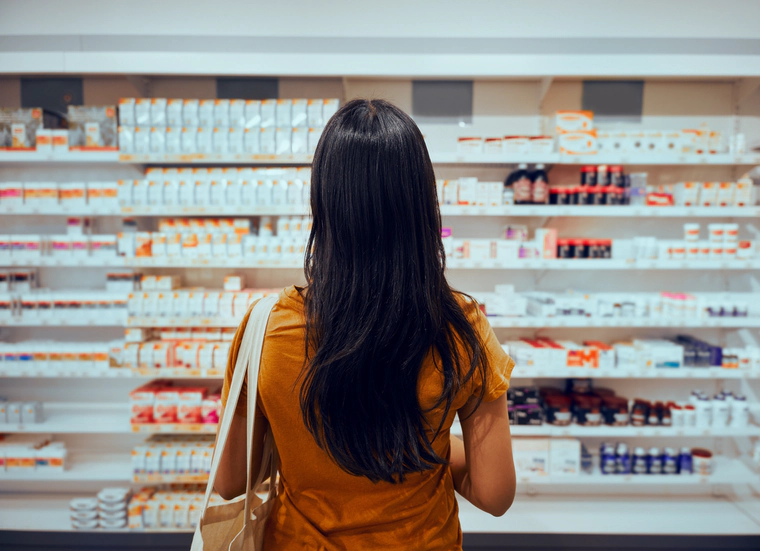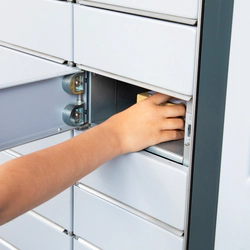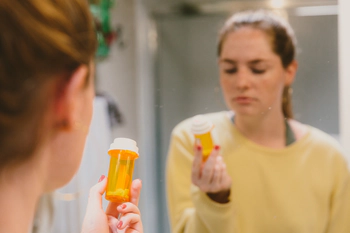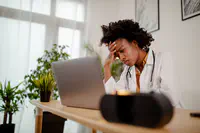Take-Back Days One of Many Options for Disposing Prescription Drugs
Prescription drug take back days have expanded across the country, now researchers are studying new ways to make prescription drug disposal easier.

As prescription drug addiction in the U.S. continues to be a National Public Health Emergency, many Americans find themselves looking for solutions on how they can prevent drug abuse from cropping up in their homes. According to the Substance Abuse and Mental Health Services Administration, two-thirds of teens who misuse prescription drugs for the first time say they got the drugs from family members or close friends. That includes getting the drugs from a family member or friend’s medicine cabinet.1
Such cabinets are prime locations where unused, unnecessary, yet highly potent and potentially addictive medications may be stored and forgotten. Thankfully, new strategies and improvements are being implemented in existing programs to ensure Americans can safely and easily dispose of unused medication.
What Are Prescription Drug Take-Back Programs?

Courtesy of FredericksburgVA.gov
The United States Drug Enforcement Agency manages the National Prescription Drug Take-Back Day. This program occurs twice per year and is centered around discreet, no-questions-asked disposal of addictive prescription drugs like opioid pain relievers, benzodiazepines, psychotropics, and other medications.
The DEA first proclaimed an official take-back day in 2010, but many regional groups had held similar events for years. April 2022’s take-back day broke all records with 721,093 lbs. of prescription drugs turned in for safe disposal. The concept of prescription drug take-back has expanded into other agencies, including pharmacies and some healthcare facilities. The goal has been to create as many safe, anonymous, and secure locations as possible to dispose of unused medications properly.2
New Ideas for Expanding Prescription Drug Take-Back
With the intent of reducing the number of unused prescription opioids in medicine cabinets across America, one group of researchers asked a simple question, “Could giving surgery patients ready-to-use mailed disposal kits for unused opioids lower the risk of abuse of the drugs?” That group’s research trials and studies provided enough evidence that, yes, providing post-operation surgery patients with a means to send back unused opioid pain relievers would lead to more unused medications being turned in for safe disposal.3
The researchers put together a study that included 235 patients who had been prescribed opioid painkillers after orthopedic or urologic procedures. To ensure the integrity of the study and to measure the strength of the hypothesis, researchers followed the usual procedure of hospital discharge for about half of the patients. (Usual procedure involves post-surgery patients receiving text instructions to dispose of their unused pills along with a link to locations of local safe disposal sites).

However, for the other half of the study participants, they received the same text message but were also mailed disposal kits four to seven days after their procedures, with instructions on using the aforementioned kits to dispose of unused medications safely.
The results of the study found that leftover opioid medications were properly disposed of by 60% of the study participants who had received a disposal kit in the mail, compared to just 43% of the study participants who had not received such a kit. The study authors concluded that, since other studies suggest only 20% to 30% of the broader, post-surgery public ever actually dispose of unused medications, sending mail-in disposal kits to recovering patients could double the rate of safe, successful, and stress-free medication disposal.4
A Need for Solutions, Drug Overdoses for Young People Double in Just Two Years
New strategies for getting old prescriptions out of homes and into safe-disposal could not have come at a better time. Data suggests that adolescents and young adults are experiencing a spike in fatal overdoses in recent years. If many of those youths are getting their drugs from medicine cabinets, disposing of such meds before young people can access them should help curb youth overdoses.5
Disposing of Prescription Drugs Safely

While young Americans seem at particularly high risk for obtaining prescription drugs from medicine cabinets, this is not a crisis unique to America’s youth. All Americans are at risk when addictive medications are easily accessible. For context, the Centers for Disease Control and Prevention reported that, “Opioids—mainly synthetic opioids (other than methadone)—are currently the main driver of drug overdose deaths. 72.9% of opioid-involved overdose deaths involve synthetic opioids.” Prescription opioid overdoses account for a portion of the total opioid death toll, and such pills often act as a user’s first experience with opioids; to potentially be followed by even more dangerous forms of opioid abuse later.6
“Opioids—mainly synthetic opioids (other than methadone)—are currently the main driver of drug overdose deaths. 72.9% of opioid-involved overdose deaths involve synthetic opioids.”
Given the health risks of unused prescription opioids being stored in medicine cabinets, Americans should immediately dispose of unused meds. They should not keep potentially addictive and dangerous pharmaceutical drugs around the home. Following are some tips on how to dispose of prescription drugs:
Drug Take-Back Days
The Drug Enforcement Administration’s Drug Take-Back Day offers multiple days throughout the year in which one can safely dispose of unused meds. The DEA keeps an updated list of days and locations in which people can dispose of unused meds.
Local Pharmacies and Permanent Drug Disposal Locations
Pharmacies often offer prescription disposal services. A phone call to one’s local pharmacy can ascertain if this service is available.
Drug disposal locations can also be located through the DEA’s listing of permanent drug disposal location sites.
Safely Disposing of Drugs at Home
If a take-back option via the DEA or another location is not available, one may need to dispose of their meds themselves. This can be done by removing the meds from their original packaging, mixing them in, uncrushed, with something undesirable (coffee grounds, cat litter, food waste, or dirt), putting the mixture in a sealable bag, and disposing of the bag along with other household waste. Flushing unused meds down the toilet is not recommended, as doing so contributes to environmental contamination.
It is far easier to prevent someone from becoming hooked on drugs than it is to help them get off drugs once addicted. To that point, every American should make it their responsibility to ensure their home is free of addictive and dangerous pharmaceuticals.
Sources:
-
SAMHSA. “Rise in Prescription Drug Misuse and Abuse Impacting Teens.” 2022. samhsa.gov ↩︎
-
U.S. News. “Leftover Opioids After Surgery? Mailed Kits Double Rate of Proper Disposal.” 2022. usnews.com ↩︎
-
JAMA Network. “Effect of Mailing an At-home Disposal Kit on Unused Opioid Disposal After Surgery.” 2022. * jamanetwork.com* ↩︎
-
JAMA. “Trends in Drug Overdose Deaths Among US Adolescents, January 2010 to June 2021.” 2022. jamanetwork.com ↩︎






 ®
®